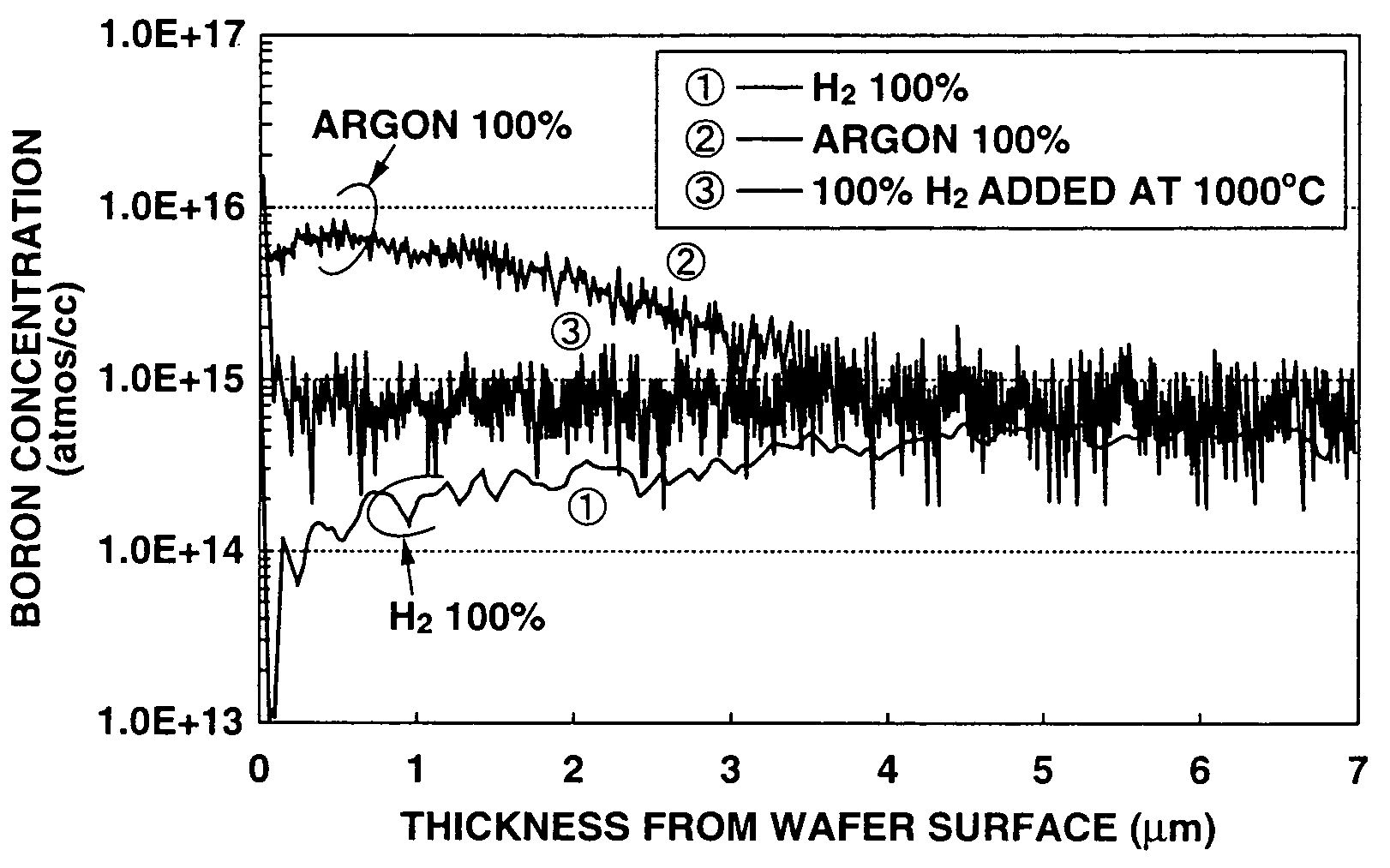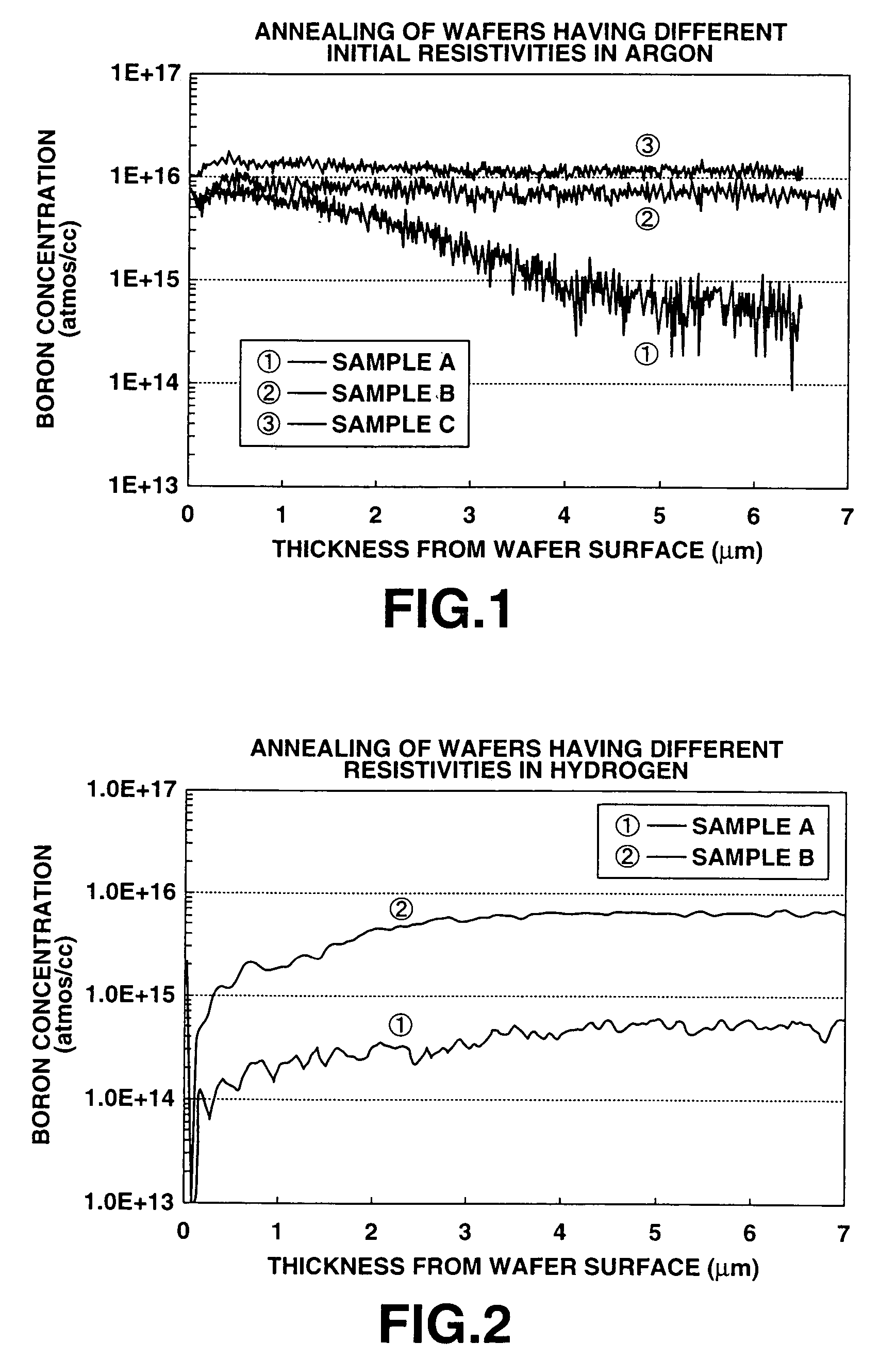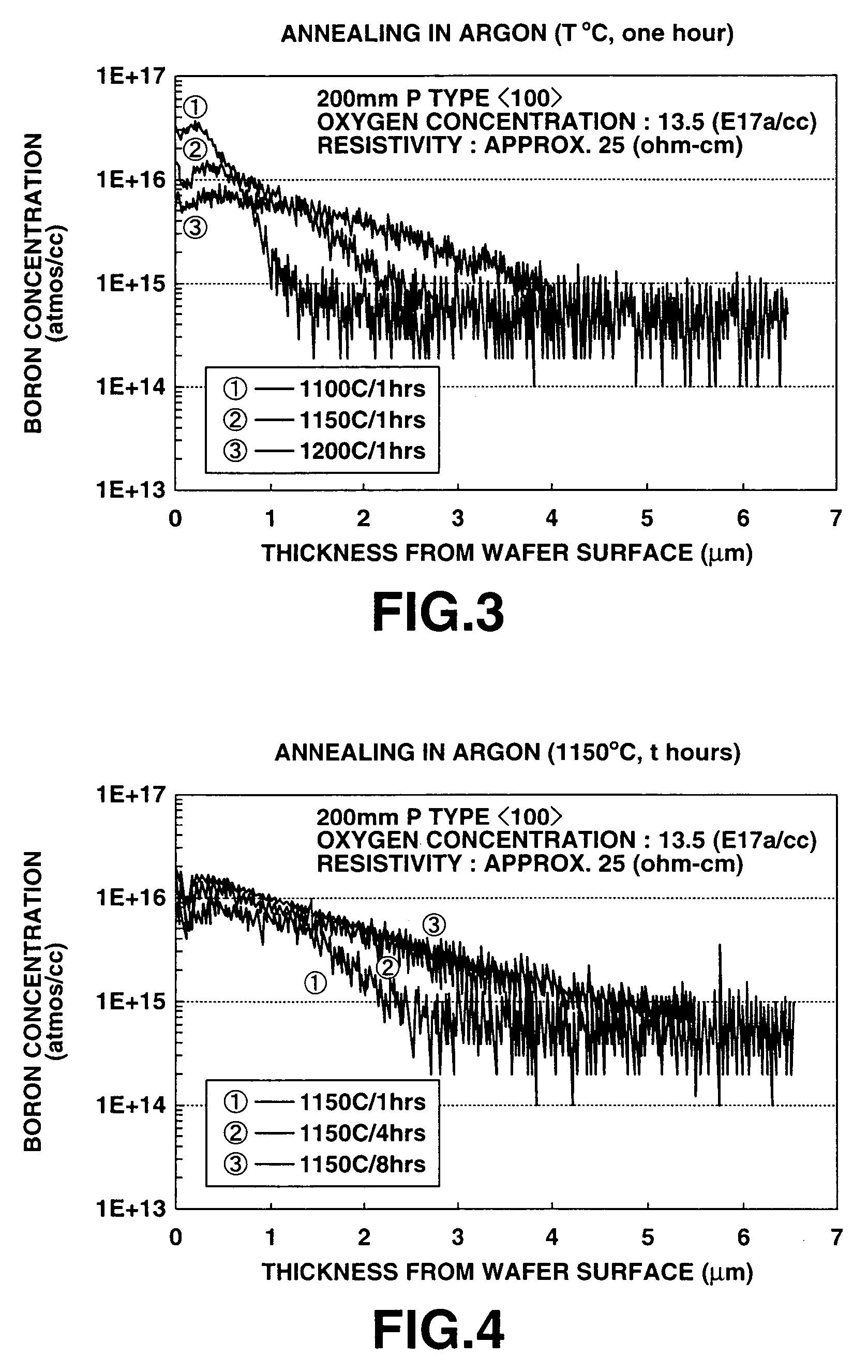Method of heat treatment of silicon wafer doped with boron
- Summary
- Abstract
- Description
- Claims
- Application Information
AI Technical Summary
Benefits of technology
Problems solved by technology
Method used
Image
Examples
embodiment 1
[0053]Switching to hydrogen or gas containing hydrogen (argon dilution) was performed with timing as shown in Table 1, each gas was kept at each temperature for 24 minutes, and annealing in argon was continued at 1200° C.
[0054]The used wafer was a P-type (boron doped) with a diameter of 200 mm and having a resistivity of 10 to 20 (Ω·cm).
[0055]
TABLE 1CZ wafer, 200 mm P-type, Resistivity: 10-20 (Ω· cm)LevelHydrogen addition temperature (° C.)Added hydrogen ratio (%)1800100280043100010041000451200100612004
[0056]One example of the SIMS analysis results obtained by annealing is shown in FIG. 5. Fore comparison, FIG. 5 shows the boron concentration distribution after treating with argon only and the boron concentration distribution after treating with hydrogen only. It is seen from FIG. 5 that a boron concentration in the surface layer is uniformized by annealing in argon with hydrogen added in the initial stage of heat treatment.
[0057]Then, the boron concentration distribution was examin...
PUM
 Login to View More
Login to View More Abstract
Description
Claims
Application Information
 Login to View More
Login to View More - Generate Ideas
- Intellectual Property
- Life Sciences
- Materials
- Tech Scout
- Unparalleled Data Quality
- Higher Quality Content
- 60% Fewer Hallucinations
Browse by: Latest US Patents, China's latest patents, Technical Efficacy Thesaurus, Application Domain, Technology Topic, Popular Technical Reports.
© 2025 PatSnap. All rights reserved.Legal|Privacy policy|Modern Slavery Act Transparency Statement|Sitemap|About US| Contact US: help@patsnap.com



